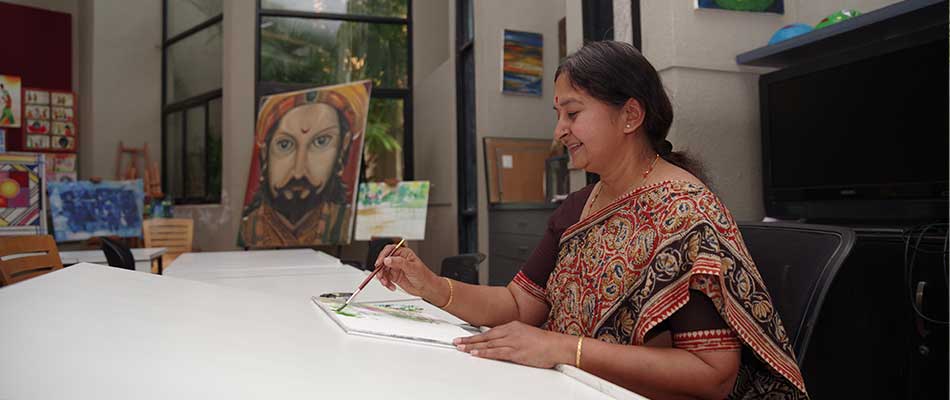Can we transfer creative strategies from other artistic domains into music-creation? Can a sequence of sounds be composed the way a choreographer composes a sequence of movements in space, a poet composes an arrangement of words, a novelist follows characters through a plot? Can music be staged the same way a director stages a play or a visual artist conceives an installation? Let us explore this.
In 2019, the academic year at FLAME University, where I teach, took off with an interesting interdisciplinary, inter-artistic research project. Ecstacies of Influence is a research-creation project by Prof. Sandeep Bhagawati an eminent composer from Berlin/Montreal, jointly with Prof. Sameer Dublay (Professor of Music, FLAME University); that explores inter-artistic ways of conceiving, creating and composing musical performances and productions, influenced by dialogues with and transfers from other artistic practices.
Prof. Bhagawati arrived to the FLAME campus with a colleague and along with artists of different disciplines: two vocalists, two percussion instrument players, two string instrument players, one classical dancer and one architect. Jointly they created six unique compositions.
One performance, for example, was titled ‘A house with seven rooms’ and addressed the basic composition of a home which had seven spaces: a courtyard, a kitchen, a living room, room for parents, room for the kids, room for the grand-parents and a prayer room. The ensemble comprised of the artists mentioned above. They weaved a symphony imagining each of the spaces in a home.
Another performance was titled ‘An orchestra of the birds’ (‘khaga-charcha’), wherein the chirping and twitters and sounds of various birds were recorded, heard and presented as a vocal and instrumental harmony by the ensemble. These were two unconventional performances out of the six. I enjoyed the newness which they presented and they created ripples in my thoughts.
Most of us understand music broadly in terms of Indian, western, instrumental, vocal, folk etc. It’s like enjoying the beauty and fragrance of a rose the way it is. But these performances opened up a new horizon and dimension to look at music! I never could have imagined that the spaces in my home nor the chirping of birds and croaking of frogs could have a peculiar sound which could be translated to a musical. Such engagements, exchange of ideas with faculty from different universities helps in broadening our understanding and getting a glimpse into what’s going on in different parts of the world.
Any new idea takes time to seep in and find a connect with the audience. Such inter-artistic and intra-artistic pursuits are like bright sunshine after a rainy day. The process of experimentation itself is so engaging that it provides multiple insights to look at conventionality.
But while all this sounds fantastic as an exploration and experiment, the first question I always have is: Why do artists (painters, sculptors, dancers, singers, actors’ et al) usually have an apprehension to intellectualize their art? Even the act of writing is considered literary, and art artistic, and these two remain silos. Why can’t the intellectual, including the literary aspect be viewed as an equally important artistic pursuit? More so, in a country like India having so much diversity to flaunt!
Being an artist, myself, I do understand that the joy of creation is so great that one does not wish to scale down the ecstatic feeling to tangible words. I paint because I am passionate about creating something beautiful and it also helps me create a ‘medictive’ space (meditative and positively addictive, a word coined by my colleague Mr. Neeraj Gangal). Epecially in a country like India, when arts are in every nook and corner, but with hardly any thoughtful documentation, artists must consider it their duty to think about and write about their respective creative pursuits. This is even more urgent because so many arts are gradually fading.
The second question is, is India and the world prepared to explore such an experimental endeavour, where the focus is more on creation and not on audience satisfaction? Prof. Bhagawati was asked this question, as to how the audience responds to such creative, experimental endeavours. He said, “The audience is a very difficult animal and I do not create to satisfy them but for the joy of music”.
His answer left me thinking about the social responsibility an artist shoulders, and the balance an artist aspires to strike between sound and music, harmony and experimentation and eventually audience satisfaction.
Artistic research in this direction needs to be at the forefront of this century. Art is the food of love…..each one must play/create/sing/dance, read and write on too.
- Prof. Suniti Vadalkar, Ph.D, Associate Professor & Chair - FSFPA


